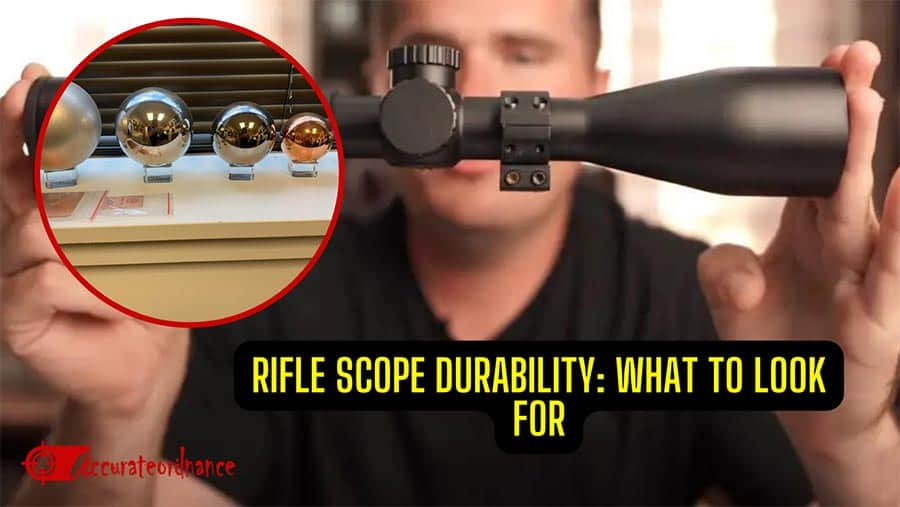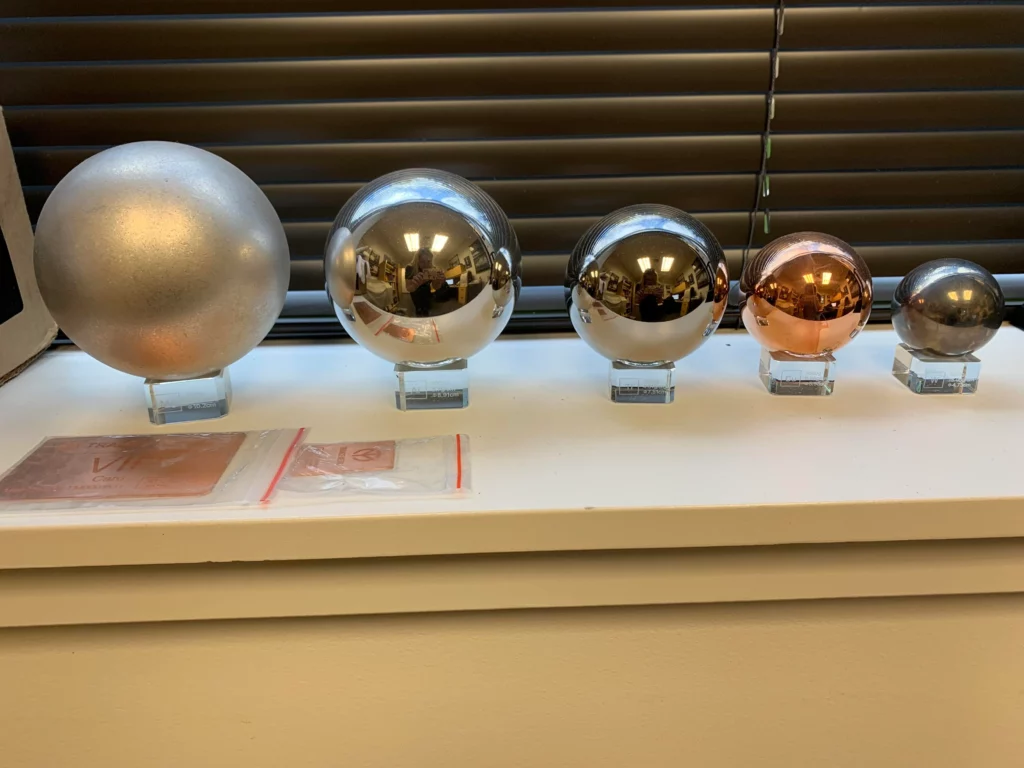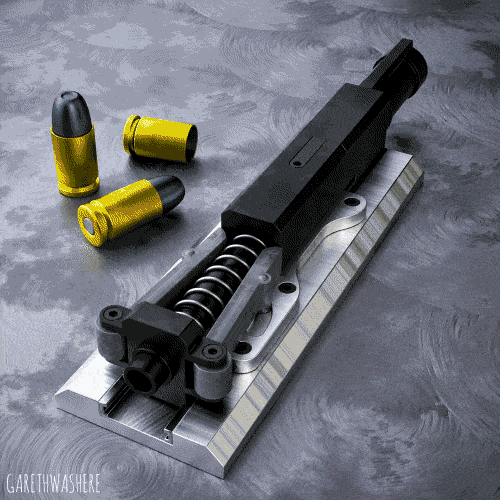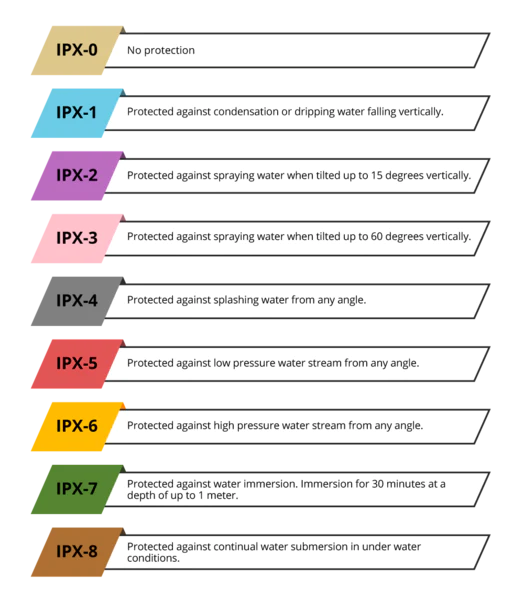Riflescopes are essential tools for hunters, sports shooters, and military personnel who want to improve their shooting accuracy and precision. They are designed to magnify the target, allowing for improved aim and range estimation. The importance of riflescopes in shooting cannot be overstated, as they can make the difference between a successful shot and a missed opportunity.
However, when choosing a scope, durability is an essential factor to consider. A durable riflescope can withstand harsh weather conditions, accidental drops, and recoil, making it a more reliable and long-lasting investment. A durable scope is especially important for hunters and military personnel who may be exposed to extreme weather conditions or use their rifles in rugged terrain.
When looking for a durable riflescope, there are several factors to consider, including construction material, lens quality, recoil resistance, waterproof and fog-proof capability, and impact resistance. This article will discuss these factors in detail and recommend what to look for in a durable rifle scope.

- Rifle Scope Durability: What to Look For
- Durability Standard Ratings
- Durability in Different Shooting Environments
- FAQs
- How can I protect my riflescope from scratches and damage?
- Can I use my riflescope in extreme cold or hot weather?
- What type of lens coating is best for durability?
- Are there specific riflescope brands known for their durability?
- Can I clean my riflescope with water and soap?
- How do I know if my riflescope is shockproof?
- What is the average lifespan of a durable riflescope?
- Can I use my scope for long-range shooting?
- Does the reticle design affect the durability of the riflescope?
- How important is the material of the scope mount for durability?
- How does the warranty of a riflescope relate to its durability?
Rifle Scope Durability: What to Look For
Construction Material
Construction material refers to the materials used in the manufacturing of riflescopes. These materials play a crucial role in determining the scope’s durability, weight, and resistance to rust and corrosion.
Different materials used to construct riflescopes

The most common materials used to construct riflescopes are aluminum, titanium, and magnesium. Aluminum is the most widely used material because of its affordability, lightweight, and corrosion resistance. It is suitable for most applications and can be found in many high-quality rifle scopes.
Titanium is a premium material that is stronger and more durable than aluminum. It is also lightweight and highly resistant to corrosion, making it a popular choice for high-end riflescopes. However, it is more expensive than aluminum.
Magnesium is another material used in the construction of riflescopes. It is lighter than aluminum and more robust than plastic, making it a good choice for mid-range scopes. Magnesium is also highly resistant to rust and corrosion.
In addition to these materials, some rifle scopes use a combination of materials to enhance durability and reduce weight. For example, some scopes feature a titanium body with aluminum internal components, while others use a combination of magnesium and plastic.
When choosing a scope, it is essential to consider the construction material and the level of durability required for your shooting needs. High-end rifle scopes with premium materials will offer the best durability and longevity, while mid-range scopes with a combination of materials can offer good durability at a more affordable price.
Comparison of materials
When comparing scope construction materials, it is important to understand the specific characteristics of each material.
- Aluminum
Aluminum is a popular material used in riflescope construction due to its affordability and lightweight. It is also highly resistant to rust and corrosion, making it a durable material for outdoor use. However, compared to other materials like titanium or magnesium, aluminum is not as strong and may not hold up as well to impacts or drops.
- Titanium
Titanium is a premium material used in high-end scopes. It is incredibly durable, lightweight, and highly resistant to rust and corrosion. Titanium is the strongest material used in scope construction and can withstand significant impacts without damage. However, its high strength and durability come at a cost, making titanium scopes the most expensive option.
- Magnesium
Magnesium is a durable material that is stronger than plastic but not as strong as aluminum or titanium. It is also lighter than aluminum, making it an attractive option for weight-conscious shooters. Magnesium offers excellent resistance to rust and corrosion and can withstand outdoor use. While not as strong as aluminum or titanium, magnesium is still durable and can hold up well to most shooting conditions.
Recommendation
The choice of construction material for a durable rifle scope depends on various factors such as the intended use, budget, and personal preferences. However, based on their individual characteristics, titanium is considered the best construction material for a durable rifle scope. If budget is a constraint, then aluminum is a great alternative as it offers a good balance of affordability, durability, and lightweight.
Lens Quality
The lens quality of a rifle scope is a critical factor in its performance and overall durability. High-quality lenses are essential for achieving a clear and sharp image, especially at longer distances. Poor-quality lenses can cause image distortion, reduced contrast, and decreased light transmission, resulting in missed shots and frustration for the shooter.
When considering the durability of a scope, the lens coating plays a significant role. High-quality lens coatings can protect the lens surface from scratches, moisture, and other environmental factors that can damage the lens and reduce image quality. The following are some of the most common types of lens coating used in riflescopes:
Types of lens coatings
- Anti-Reflective Coating
This coating reduces glare and reflection on the surface of the lens, which can cause image distortion and reduce image quality. Anti-reflective coatings are applied to both sides of the lens to maximize light transmission and improve image clarity.
- Hydrophobic Coating
This coating repels water and moisture from the lens surface, preventing water spots and improving image clarity in wet conditions.
- Scratch-Resistant Coating
This coating is applied to the lens surface to improve its durability and resistance to scratches and abrasions.
- UV Protection Coating
This coating helps to block harmful UV rays that can damage the lens and cause image distortion.
Types of Lens Materials
Different types of lens materials have varying levels of durability and impact resistance. The following are some of the most common lens materials used in riflescopes, along with their respective characteristics:
- Glass
Glass is a popular lens material for scopes due to its excellent optical clarity and scratch resistance. However, glass lenses are relatively heavy and can break if dropped or struck with enough force.
- Acrylic
Acrylic lenses are lightweight and more impact-resistant than glass, making them a popular choice for budget-friendly scopes. However, acrylic lenses are not as scratch-resistant as glass and can be prone to distortion.
- Polycarbonate
Polycarbonate lenses are highly impact-resistant and are often used in military and law enforcement scopes. They are also lightweight and offer good optical clarity. However, polycarbonate lenses are not as scratch-resistant as glass and can be prone to distortion.
- Hybrid
Some riflescopes feature hybrid lenses, which are made from a combination of materials such as glass and plastic. Hybrid lenses can offer the best of both worlds, with good optical clarity, scratch resistance, and impact resistance. However, they can be more expensive than other types of lenses.
Recommendation
There are several factors to consider when it comes to lens quality for a durable scope. The following are some of the most important factors to consider when selecting the best lens quality for a durable scope:
Optical Clarity
The optical clarity of the lens is critical for achieving a clear and sharp image, especially at longer distances. High-quality lenses with superior optical clarity are essential for accurate shooting and can improve the overall performance of the scope.
Coatings
The lens coatings are also essential for the durability of the scope. High-quality lens coatings can protect the lens surface from scratches, moisture, and other environmental factors that can damage the lens and reduce image quality.
Impact Resistance
Polycarbonate lenses are highly impact-resistant and are often used in military and law enforcement rifle scopes where durability is a top priority.
Based on these factors, the best lens quality for a durable scope would be one that has high optical clarity, superior lens coatings, and excellent impact resistance. Glass lenses with anti-reflective coatings are popular for their optical clarity and scratch resistance, but they may not be the most impact-resistant option. Polycarbonate lenses are highly impact-resistant and offer good optical clarity, but they may not have the same level of scratch resistance as glass.
Hybrid lenses, which are made from a combination of materials such as glass and plastic, can offer excellent optical clarity, scratch resistance, and impact resistance. They may be more expensive than other types of lenses, but they are an excellent choice for those who need a durable scope with superior lens quality.
Recoil Resistance

When a bullet is fired, it creates a force that propels the bullet forward and simultaneously creates an equal and opposite force that pushes the firearm backward. This backward force is known as recoil. The impact of recoil on scopes can be significant. The force of the recoil can cause the scope to move, shift, or even become damaged. The amount of recoil that a scope can withstand depends on several factors, including the quality of the materials used in its construction, the weight and design of the scope, and the strength and durability of the mounting system.
When a rifle is fired, the recoil causes the rifle to move backward, which can cause the scope to shift or move as well. If the scope is not securely mounted, it can become misaligned, making it difficult to aim accurately. In some cases, the recoil can even cause the scope to become damaged, which can significantly reduce its effectiveness and accuracy.
To minimize the impact of recoil on scopes, manufacturers often use high-quality materials in the construction of the scope, including aircraft-grade aluminum or other high-strength alloys. They also design the scope to be as lightweight as possible while maintaining durability and strength. Additionally, manufacturers often incorporate shock-absorbing features, such as recoil-reducing mounts or internal components, to help absorb the force of the recoil and protect the scope from damage.
Types of scopes in terms of recoil resistance
The following are some of the most common types of scopes and how they compare in terms of recoil resistance:
- Fixed Power Scopes
Fixed power scopes typically have fewer internal components and simpler designs, which can make them more durable and resistant to recoil. They also tend to be smaller and lighter, which can help reduce the impact of recoil on the scope.
- Variable Scope
A Variable scope can vary in terms of its recoil resistance, depending on the quality of its internal components and construction. Some variable scopes are designed to withstand heavy recoil, while others may not be as durable and may shift or become damaged when fired.
- Tactical Scopes
Tactical scopes are designed for use in high-stress situations, such as military or law enforcement operations. They are often constructed with high-quality materials and have shock-absorbing features to help withstand the impact of recoil.
- Hunting Scope
Hunting scopes are designed for use in the field and can vary in terms of their recoil resistance, depending on their construction and quality. Some hunting scopes are designed to withstand the recoil of heavy hunting rifles, while others may need to be more durable.
- Long-Range Scopes
Long-range scopes are designed for shooting at long distances, often with high-powered rifles. These scopes typically have larger internal components and may be more susceptible to recoil damage if not constructed with high-quality materials.
Recommendation
For those looking for a durable scope with excellent recoil resistance, a tactical scope or a fixed power scope would be the best options.
Tactical scopes are typically built with robust internal components that can handle the recoil of powerful firearms. Tactical scopes often come with a high magnification range, allowing for precision aiming over long distances. Fixed power scopes, on the other hand, are typically more straightforward in design and construction. This simplicity makes them less susceptible to damage from recoil. They also tend to be less expensive than tactical scopes.
Waterproof and Fog-proof Capability
Importance of Water and Fog-proof
Waterproof and fog-proof capabilities are essential for a durable scope for a few reasons:
- Protection from the elements
When hunting or shooting in different environments, it’s crucial to have a scope that can withstand different weather conditions. A waterproof scope can ensure that the scope remains functional even when exposed to rain, snow, or other moisture. Similarly, fog-proof scopes prevent fog from forming on the internal lenses due to temperature changes, ensuring clear and uninterrupted visibility.
- Preventing damage to internal components
Exposure to moisture and humidity can lead to corrosion and damage to the internal components of the scope. This damage can result in decreased durability and reliability over time. With a waterproof and fog-proof scope, moisture cannot enter the internal components, protecting them from potential damage.
- Improved performance
A waterproof and fog-proof scope can provide a clear and uninterrupted view of the target, improving accuracy and performance. Without the hindrance of fog or moisture, the shooter can focus on their target with confidence, knowing that the scope will provide a clear image.
Durability Standard Ratings
MIL-STD Rating
MIL-STD ratings are like a set of rules or guidelines created by the U.S. Department of Defense to make sure that all military equipment works well together and meets certain quality standards. These rules cover everything from how the equipment should be designed and developed to how it should be made and tested. The idea is to ensure that all military gear is consistent, reliable, and compatible with each other.
When it comes to riflescopes, manufacturers can choose to test their products according to these MIL-STD guidelines. This means they can pick specific areas to focus on, like how durable the scope is, how well it can handle shocks, or how it performs under different environmental conditions. These tests help determine if the scope meets the high standards required for military use and if it is reliable enough for soldiers to depend on in critical situations.
The actual tests can be different depending on who is doing them, but they are always tough and standardized. For example, they might test the scope in really hot or cold temperatures to see if it can still work properly. They might expose it to water or dust to check if it can handle tough environmental conditions. They could also see how it holds up when a gun is fired, testing if it can handle the recoil without losing accuracy or getting damaged.
By doing these tests, manufacturers can know if their scopes are tough enough to withstand the harsh conditions military personnel might face. So, when you see a riflescope with MIL-STD ratings, it means the manufacturer has tested it very thoroughly to make sure it’s strong, dependable, and can handle challenging situations that soldiers might encounter. It gives you extra confidence that the scope is designed to meet the high standards set by the military.
Metrics of the MIL-STD Rating
In MIL-STD testing for riflescopes, several important factors are assessed to ensure that the scope meets the required standards for military use. Some common metrics include:
Environmental Testing: This involves subjecting the scope to various environmental conditions that it might encounter in the field. The scope is tested in extreme temperature ranges to see if it can still function accurately in freezing cold or scorching heat. It is also exposed to high humidity, sand, dust, and other contaminants to check if it can withstand tough environmental challenges without compromising performance.
Shock Resistance: The scope is tested to see how well it can handle the powerful recoil forces generated by firing different caliber firearms. The impact of recoil can be significant, so a scope with good shock resistance will maintain its zero accuracy and remain undamaged after numerous shots.
Water Resistance: This test evaluates the scope’s ability to function in wet conditions. It is exposed to water, rain, and other forms of moisture to ensure that it remains functional and doesn’t fog up or suffer damage due to water exposure.
Optical Performance: The optics of the scope are thoroughly tested to meet specific clarity, resolution, and image quality standards. This ensures that the shooter gets a clear and sharp image of the target, even at long distances.
Durability and Reliability: The overall durability and reliability of the scope are evaluated under demanding conditions. This includes assessing the materials used in the construction, the quality of internal components, and the overall build of the scope to ensure it can withstand tough use and abuse in the field.
Other Things to Know
- Manufacturers may claim that their scopes are “compliant” with certain MIL-STD tests, but this doesn’t necessarily mean they have been officially certified or verified by the U.S. Department of Defense. It’s essential for potential buyers to verify these claims and seek additional information or proof from the manufacturer.
- MIL-STD ratings, if claimed, may apply only to specific models or features of a particular scope, not necessarily the entire product line. Different models within a brand might have varying levels of compliance with MIL-STD tests.
- MIL-STD tests are generally more stringent and demanding than common industry tests. Achieving MIL-STD compliance indicates a higher level of durability and performance, making it a valuable indicator of a scope’s capabilities in military applications.
- While MIL-STD ratings are important indicators of a scope’s performance for military use, other factors should be considered for civilian or commercial use. These factors include optical clarity, reticle design, ease of use, and overall suitability for the intended shooting activities. So, it’s essential to consider the specific needs and preferences when choosing a riflescope beyond just MIL-STD ratings.
IPX rating system

The IPX rating system is a standardized method used to indicate the level of protection provided by a product against solids and liquids. It is commonly used for various electronic devices, outdoor equipment, and even riflescopes. The IPX code consists of two digits, and each digit represents a specific aspect of protection.
First Digit (Solid Particle Protection)
The first digit in the IPX code indicates the level of protection against solid particles such as dust, dirt, or sand. The scale ranges from 0 to 6, with higher numbers indicating greater protection.
Second Digit (Liquid Ingress Protection)
The second digit in the IPX code indicates the level of protection against liquid ingress, such as water or other liquids. The scale ranges from 0 to 8, with higher numbers indicating greater protection. Let’s look at the second digit ratings.
IPX0: An IPX0 rating indicates that the scope offers no protection against liquid ingress. This means the scope is not designed to withstand any exposure to water, making it unsuitable for use in wet or rainy conditions. Users should be cautious not to expose the scope to any moisture to prevent potential damage or malfunction.
IPX1: Scopes with an IPX1 rating provide protection against vertically falling water drops, like condensation. While this level of protection is limited, it does offer some resistance to light water exposure. However, the scope is not suitable for use in rainy or wet environments, as it is not designed to withstand direct water splashes or heavy rain.
IPX2: Riflescopes with an IPX2 rating offer protection against water drops falling at an angle of up to 15 degrees from vertical. This means the scope can withstand light splashes or drizzle from certain angles. However, it is not designed for use in heavy rain or under prolonged exposure to moisture.
IPX3: These scopes protect against water spray at an angle of up to 60 degrees from vertical. This level of protection allows the scope to handle more water exposure. However, the scope is not suitable for submersion or continuous immersion in water.
IPX4: A scope with an IPX4 rating is resistant to splashing water from any direction. This level of protection makes the scope suitable for use in light rain and wet conditions. It can withstand water splashes without compromising its performance. However, the scope is not designed for immersion in water.
IPX5: Scopes with an IPX5 rating offer protection against water jets from any direction, but they are not designed for immersion. This means the scope can handle more substantial water pressure, such as water jets, without allowing water to enter its interior. However, it is not suitable for use underwater or in situations involving continuous water exposure.
IPX6: Riflescopes with an IPX6 rating offer protection against powerful water jets from any direction but are not designed for immersion. This level of protection allows the scope to withstand strong water pressure, making it suitable for use in harsh weather conditions with heavy rain or high-pressure water.
IPX7: IPX7 ratings are protected against temporary immersion in water up to 1 meter for 30 minutes. This means the scope can survive accidental submersion in water, such as falling into a shallow pool or being dropped in a puddle. The scope remains operational after being immersed in water for a limited time.
IPX8: A scope with an IPX8 rating is protected against continuous immersion in water beyond 1 meter for a specified time. This highest level of protection allows the scope to be fully submerged in water beyond 1 meter and still maintain its functionality. The specific duration and depth of immersion are usually specified by the manufacturer.
ANSI/ASQ Z1.4-2008
ANSI/ASQ Z1.4-2008 is a statistical sampling standard that plays a crucial role in quality control during the manufacturing process. Though not directly linked to durability, this standard is vital for manufacturers in ensuring consistent quality and performance in their rifle scopes.
In the context of riflescope manufacturing, adhering to the ANSI/ASQ Z1.4-2008 standard involves taking a representative sample from a production lot of scopes and inspecting it thoroughly. The goal is to make informed decisions about the quality of the entire lot based on the results of the sample inspection.
Here’s how the process works:
Defining Acceptance Criteria: The manufacturer sets specific criteria for what is considered an acceptable level of quality for their riflescopes. These criteria typically include specifications for optical performance, mechanical integrity, durability, and other relevant factors.
Random Sampling: From the entire production lot, a statistically significant sample of riflescopes is randomly selected. The size of the sample depends on the lot size and the desired level of confidence in the inspection results.
Inspection and Testing: The selected scopes undergo rigorous inspection and testing according to the defined acceptance criteria. This can involve various tests, including optical performance tests, mechanical tests, water resistance tests, and more.
Decision Making: Based on the results of the sample inspection, the manufacturer can make decisions about the quality of the entire production lot. If the sample meets the acceptance criteria, it is an indication that the entire lot is likely to be of acceptable quality. If the sample does not meet the criteria, the manufacturer can take corrective actions, such as adjusting the manufacturing process, re-inspecting the lot, or scrapping defective scopes.
Although this standard doesn’t directly address durability, it is an integral part of the overall quality assurance process, indirectly contributing to the scopes’ long-term durability and reliability. A well-controlled manufacturing process guided by this standard increases the likelihood of producing durable scopes that can withstand the rigors of various shooting environments.
Durability in Different Shooting Environments
Durability is of utmost importance in different shooting environments, including hunting, military applications, and competitive shooting, due to the unique challenges and demands each setting presents.
Hunting
In hunting, shooters often face rugged terrains, harsh weather conditions, and encounters with obstacles like branches and rocks. A durable riflescope is essential to withstand these challenges and maintain its functionality and accuracy. Durability ensures that the scope can withstand accidental drops, impacts, and exposure to rain or dust without compromising its performance. A reliable scope in hunting scenarios can make all the difference between a successful shot and a missed opportunity.
Military Applications
In military applications, durability is paramount as soldiers rely on their equipment, including riflescopes, in life-threatening situations. Military personnel may encounter extreme weather conditions, water submersion, high-velocity recoil, and harsh handling during combat. A durable riflescope is essential for maintaining accuracy and performance in such demanding environments, ensuring soldiers can rely on their equipment even in the toughest situations.
Competitive Shooting
Competitive shooting demands consistent and precise performance from the shooter and their equipment. In this setting, shooters need a durable riflescope that can maintain its zero and withstand the frequent adjustments and stresses experienced during competitions. A scope’s durability is critical to maintaining repeatability and accuracy throughout the shooting event, giving competitors the confidence to focus on their performance without worrying about equipment failures.
FAQs
How can I protect my riflescope from scratches and damage?
To protect your scope from scratches, you can use scope covers or lens caps when not in use. These protective covers shield the lenses and body of the scope from dust, debris, and potential impacts. Avoid placing the scope on rough surfaces and handle it with care to prevent scratches.
Can I use my riflescope in extreme cold or hot weather?
Most modern riflescopes are designed to withstand a wide range of temperatures, but it’s essential to check the manufacturer’s specifications for the specific model. Generally, high-quality scopes are built to handle extreme cold and hot weather conditions without compromising their functionality.
What type of lens coating is best for durability?
Multi-coated lenses are considered the best for durability. These coatings provide multiple layers of protection against scratches, moisture, and environmental elements. They enhance the durability of the lens and improve image clarity.
Are there specific riflescope brands known for their durability?
Several reputable brands are known for producing durable riflescopes. Some popular options include Leupold, Vortex Optics, Nightforce, Nikon, and Zeiss.
Can I clean my riflescope with water and soap?
It is not recommended to clean your riflescope with water and soap. Instead, use a soft, microfiber cloth or lens cleaning solution specifically designed for optical equipment. Gently wipe away dust and dirt from the lenses and body. Avoid using harsh chemicals or abrasive materials that could damage the lens coatings.
How do I know if my riflescope is shockproof?
If your riflescope is shockproof, it means it can withstand the recoil and impact generated when firing a rifle. Most reputable riflescope manufacturers explicitly state this capability in their product descriptions.
What is the average lifespan of a durable riflescope?
The average lifespan of a durable riflescope depends on factors like build quality, usage, and maintenance. High-quality scopes with proper care can last for many years, even decades. Some well-maintained scopes have been known to perform optimally for over 20 years or more. However, individual experiences may vary.
Can I use my scope for long-range shooting?
Yes, if you have a durable riflescope with high-quality optics and shockproof features, it can be suitable for long-range shooting.
Does the reticle design affect the durability of the riflescope?
The reticle design does not directly affect the durability of the riflescope. The durability mainly depends on the build quality, materials used, and shockproof capabilities. However, the reticle design can impact your shooting experience, accuracy, and ease of use.
How important is the material of the scope mount for durability?
The material of the scope mount is essential for durability and overall stability. High-quality scope mounts made from durable materials like aluminum or steel provide a secure and rigid platform for your riflescope. A sturdy mount ensures that your scope remains zeroed and unaffected by recoil or vibrations during shooting.
How does the warranty of a riflescope relate to its durability?
The warranty of a riflescope is an assurance provided by the manufacturer that the scope is free from defects and will perform as intended for a specified period. The warranty duration varies between brands and models. A longer warranty period can be an indication of the manufacturer’s confidence in the scope’s durability. However, it’s essential to note that some warranties may not cover damages resulting from misuse or accidents.

Mike Hardesty is a published freelance gun writer. He also possesses specialized expertise in rifle scopes With dozens of articles and reviews published in Pew Pew Tactical, Snipercountry.com, and TTAG (The Truth About Guns), Mike is considered a firearms expert. His special area of expertise is handguns.
Mike is a long-time shooter. He has been punching paper targets, taking deer and other game and shooting at competitions since about 1975. Other related pursuits include reloading and bullet casting. He currently reloads for over 10 calibers, both handgun and rifle. His reloads, particularly for 9mm, were in great demand during the height of the ammo shortage among family and friends. He donated hundreds of rounds to informal shooting sessions. He was quoted as saying “I do not sell my reloads but I sure will help my guys shoot ’em for free!”. He has a few cherished firearms that he has inherited or otherwise procured — those are his favorites.
He earned B.S. and M.S. degrees from Indiana State University in 1974-1975.
He’s a firearm experts and is the founder of mhardesty.com.
